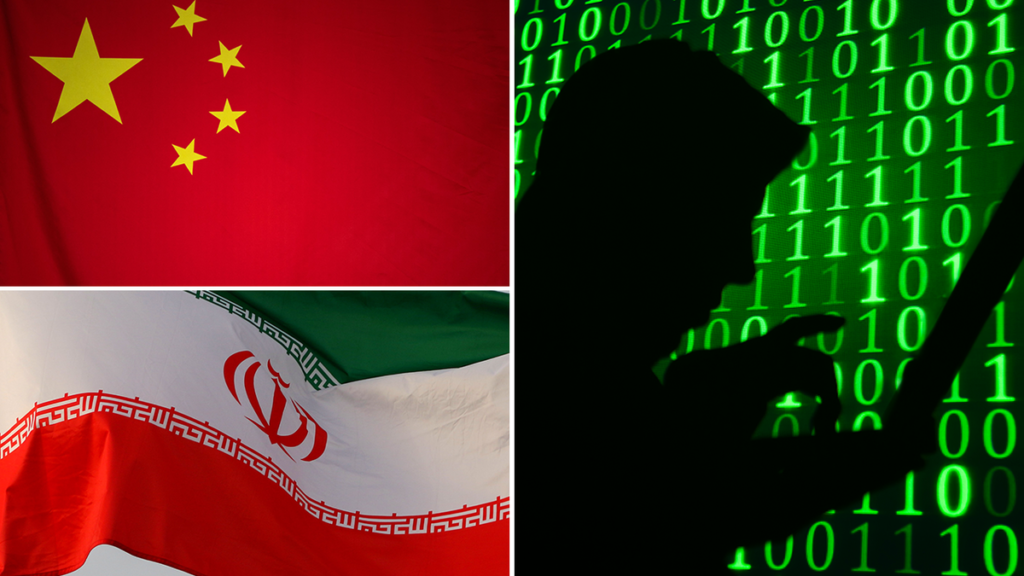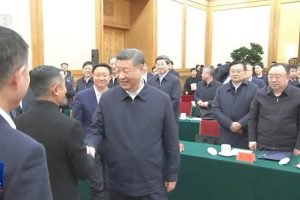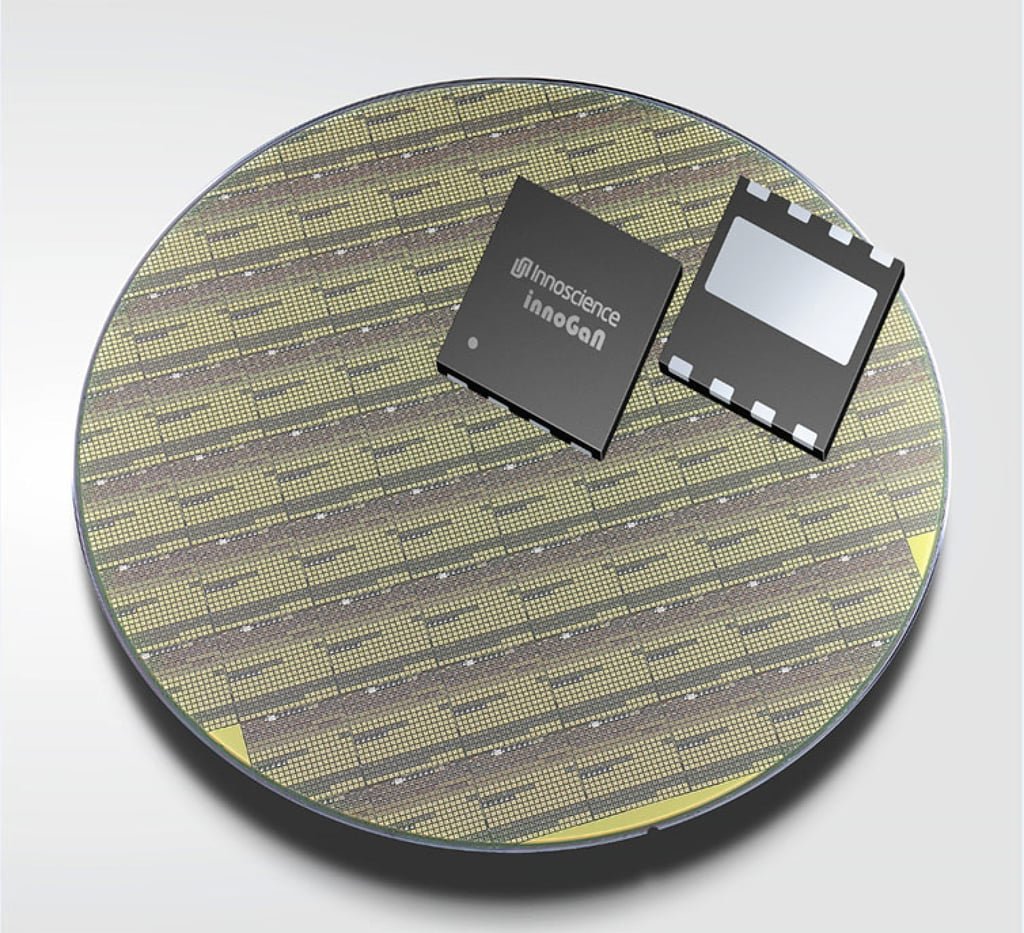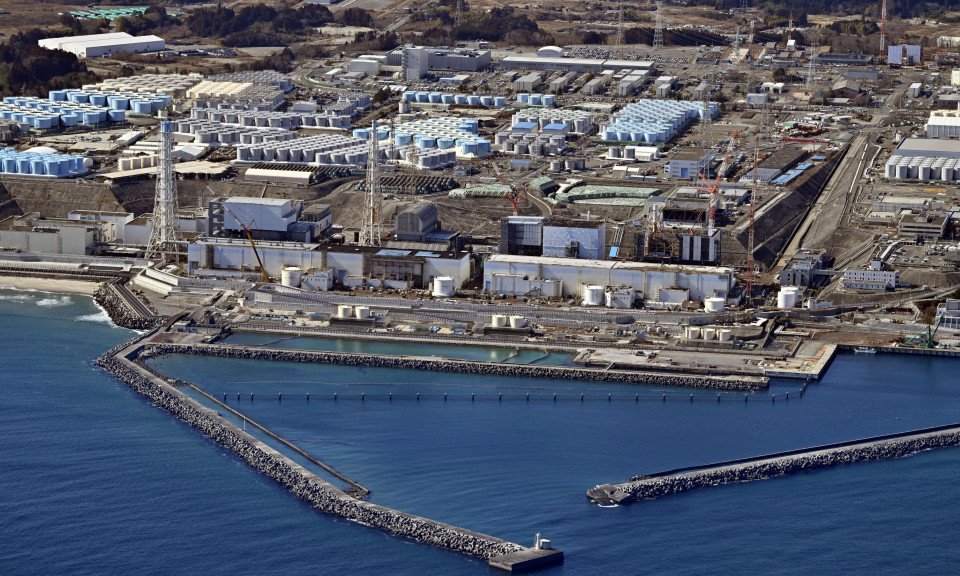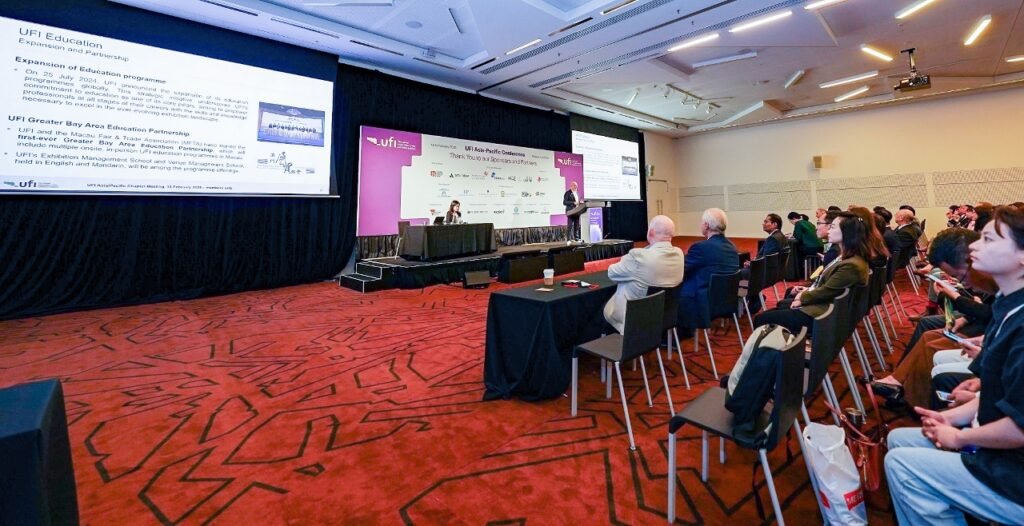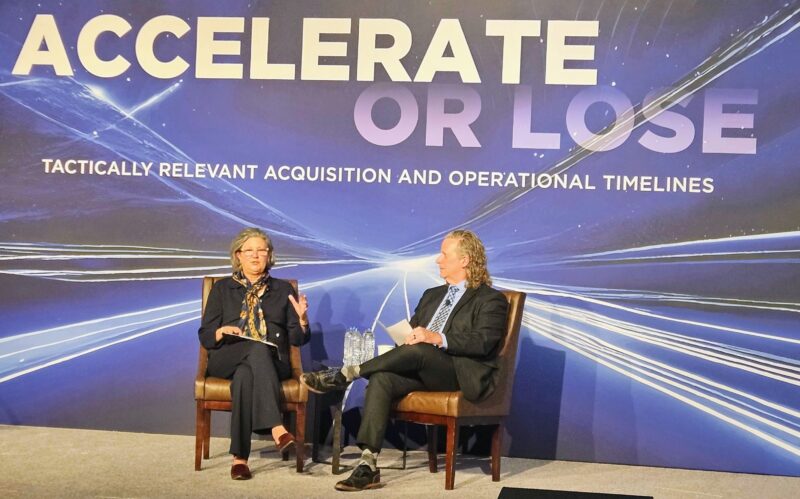
U.S. Space Force Chief Science Officer Stacie Williams, left, addresses the National Security Space Association Defense and Intelligence Space conference in Reston, Va., Feb 11, 2025, with moderator Jeff Gossel (right), former technical director for space and missiles at the National Air and Space Intelligence Center. Photo: Shaun Waterman for Via Satellite
RESTON, VIRGINIA — While the U.S. government and the military in particular is cutting its spending on scientific and technical research, China is ramping up, seeking to close the gap in technology which has underpinned U.S. military superiority in space and other domains for two generations, a senior Space Force official said last week.
“That is pretty scary,” Space Force Chief Science Officer Stacie Williams told the National Security Space Association’s Defense and Intelligence Space Conference Feb 11. “It means we have to do more with less.”
It also means that the technological advantage the U.S. has enjoyed over its competitors and adversaries for more than half a century is swiftly eroding, she said.
Williams said the Space Force is trying to adapt, leveraging its relationships. “We’re smart, we’re innovative, we can change … My priorities right now are partnering to win with commercial [partners], with international [allies] and also with other U.S. government agencies,” she said.
Partnerships multiply the value, even of declining U.S. investment, Williams said, “The more partners, the bigger your impact … Partnering with international allies we have opened up new markets. We share risk. We each get to build capacity in our two countries, and we also get access to unique capabilities” that come from that collaboration.
Williams said she used the Air Force’s generative AI chatbot NIPRGPT (NIPRNet, or Non-classified Internet Protocol Router Network, the DoD’s unclassified computer network) to run an analysis of U.S. government documents about federal spending on defense science and technology (S&T) research.
Her analysis showed that spending, as a percentage of GDP, hovered around .5 percent in the first few decades of the 20th century, with a boost to almost 1 percent in the 1930s as result of the New Deal. After WWII, with first the Cold War and then the space race, the percentage started to climb, peaking in the 1960s at about 3.5 percent. Since then it has declined every decade until by 2020 it was down to 0.9 percent.
The 2024 Biden budget reduced Department of Defense research spending by 14 percent, a cut Williams called “huge.” The new Trump administration has promised sweeping, across the board budget cuts to DoD budgets.
The cutbacks in federal funding have downstream effects, too, Williams pointed out. When defense funding decreases, U.S. universities “turn away from defense-relevant research and follow the funding” to focus on non-defense relevant research for which they can get support, she told Via Satellite.
She cautioned that the numbers are complex, since they involve distinctions, for instance between basic and applied research, and judgements about what might count as defense relevant. She acknowledged that an analysis by generative AI could contain errors, but added that the same trend of declining U.S. government funding for S&T research had been noted by numerous academic studies.
China, for its part, had spent the last 20 years ramping up its military S&T research spending, Williams said, cautioning that the numbers are estimates based on reports from sources including the Chinese government, research institutions, and international organizations.
Starting from a modest base of about a quarter of a percent of GDP in 2001, Beijing’s spending had grown steadily to two-thirds of a percent in 2020, even as their economy had grown by leaps and bounds. At that rate, “It is very likely they have [already] surpassed us in terms of [percentage of] GDP,” Wlliams told Via Satellite. She acknowledged that there is “conflicting information in the various sources about whether they have surpassed us in terms of total dollars.”
The impact of these numbers can be seen in China’s progress in space.
China’s first satellite, Dong Fang Hong-1 (The East is Red-1) was launched in 1970, almost a decade and a half after the Soviet Union’s launch of Sputnik in 1956 started the space race. For two months it broadcast the communist anthem, The East is Red, and announced the time. By 1991, the time of the First Gulf War, China had successfully completed just 28 launches, compared with 928 by the U.S. and more than 2000 by the Soviet Union.
Williams called that war, Operation Desert Storm, the 1991 expulsion of Iraq from Kuwait, “The first space war.”
At the time, GPS was the only satellite-based Position, Navigating and Timing (PNT) system, and the U.S.-led coalition used GPS guided precision munitions to deadly effect, broadcasting their effectiveness in televised live briefings by military commanders.
“It really demonstrated to the rest of the world the power that space brings to warfare,” Williams said.
China was watching, she added, and since then had made strategic investments in space technologies as a way to neutralize that power, both by building their own space-based capabilities and developing ways to take out U.S. space assets.
Now China, because it has invested heavily, is one of the leading nations in space, with its own crewed orbiting lab, its GPS equivalent BeiDou, a plan to send astronauts to the Moon by the end of the decade and even a rival to Starlink’s global Low-Earth Orbit (LEO) constellation, called Qianfan or a Thousand Sails.
And space is only one technology area where China was looking to outpace the U.S., Williams said.
“We’ve heard a lot this week about GPS, PNT, cybersecurity and AI, but none of those technologies would be possible if we didn’t invest in basic research,” Williams said. “We had to study electromagnetism, we had to study physics. We needed to look at mathematical algorithms for AI, understanding RF and microwave technology, developing antennas, cryogenic cooling, astrodynamics. None of these technologies would have been possible if we hadn’t invested,” she said.
“The space architecture that we have now, which is the best in the world, was not done just because we dibbled and dabbled,” she said, “It’s because we had a strategic approach to S&T.”
That approach enabled U.S. leadership in space and allowed the nation to reap the economic and military benefits of preeminence in this new domain, Williams explained.
Now, to keep ahead in newly emerging technologies like advanced materials, quantum technology and human-machine interaction, the U.S. needs to invest, she insisted. The U.S. technological advantage in space had enabled its military to dominate that new domain for a generation. Who would reap those advantages from the next generation of new technologies?
“If we’re not investing appropriately,” Williams said, “Then we’re not going to be the ones to discover that technology. We’re not going to be the ones to have it [first]. We’re not going to be the ones driving our economy with that. We’re not going to be the ones controlling that. It’s going to be somebody else. And that really frightens me.”




